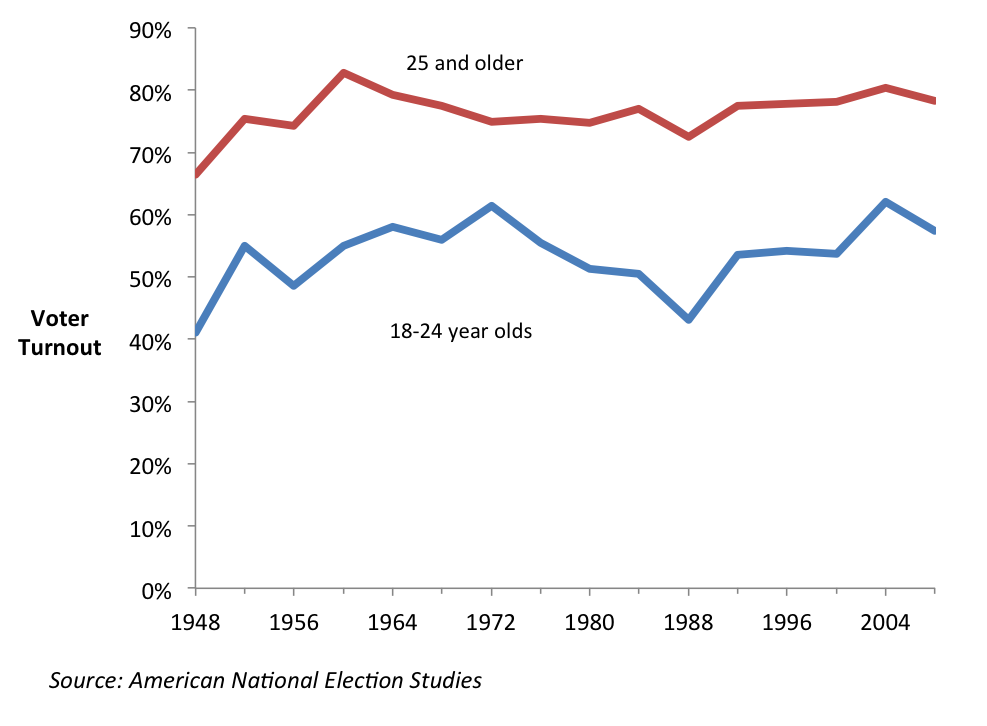Last week in the Boston Globe, Joanna Weiss noted efforts by campaigns to get younger people to vote, ranging from President Obama’s appearance on Between Two Ferns to Ted Cruz’s machine-gun bacon cooking and Simpsons references. As Weiss notes, getting young people to vote is a longstanding issue for campaigns. But, she adds:
The problem is getting worse. Kei Kawashima-Ginsberg, director of CIRCLE, a Tufts-based center that studies civic engagement among young Americans, said the percentage of 18-to-29-year-olds who voted in the 2014 midterm elections was 19.9, the lowest ever recorded, and significantly below the 24 percent who voted in 2010.
Is the problem actually getting worse? Not really. Indeed, as the graphs on Weiss’ article show, younger voters have always turned out in lower numbers than older voters in mid-term elections, and by a pretty consistent margin.
Here’s a longer-term look at this trend. The graph below shows the percentage of Americans who claim to have voted in presidential elections from 1948 to 2008, broken down by age group. Younger voters consistently vote in lower percentages, usually by around 20 to 25 percentage points. Why? It’s pretty simple: they have less experience voting. Lots of research suggests that voting is habitual—the more you’ve done it, the more likely you are to do it again. Younger voters simply haven’t developed the habit yet.

Not only that, but the age group gap is actually relatively narrow in the most recent years compared to the yawning chasms in the 1980s and ’90s. If there’s a trend here, it actually looks like Millennials are closing the age gap a bit relative to the Gen-Xers that came before them.
So why was youth turnout in the 2014 mid-terms so dismal. Because turnout at all ages was dismal. Despite all the hype in that election, most of the campaigning occurred in a relatively small number of competitive states and districts, and people who weren’t located in those competitive places simply didn’t get the persistent reminders to show up and vote.
This is why efforts to specifically target young voters are likely to fall on deaf ears. It’s not that they’re unusually cynical or distrustful. You can be cynical and distrustful and still vote, and many trusting patriots sometimes still forget to turn out. Young voters are just responding to the same voting incentives everyone else is. If the election is close in their state or district, if the campaigns are spending lots of money on advertisements, if volunteers are knocking on their doors begging them to vote, they’ve got a pretty good chance of voting, whether they’re young or old.
Also, if you’re really concerned about young people not participating, it might be helpful to knock down some of the barriers that prevent them from doing so. Voter registration requirements, photo ID rules, inadequately staffed polling places, and improperly maintained voting machines can lower turnout across all age groups.
But there’s nothing wrong with young voters that isn’t wrong with the rest of us.
What Makes Us Politic? is Seth Masket’s weekly column on politics and policy.





